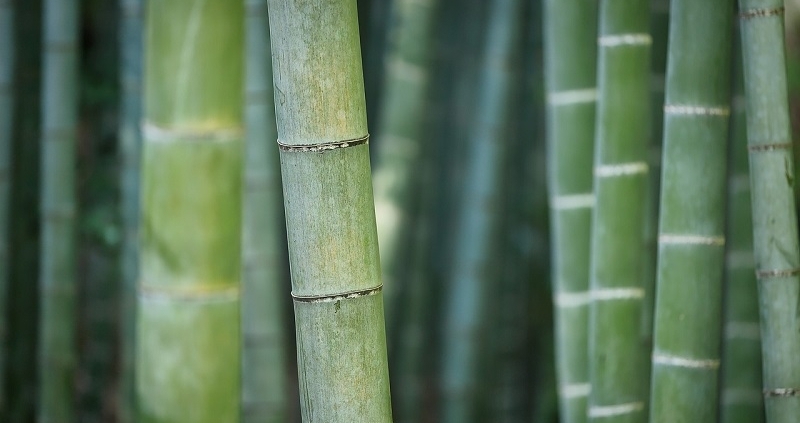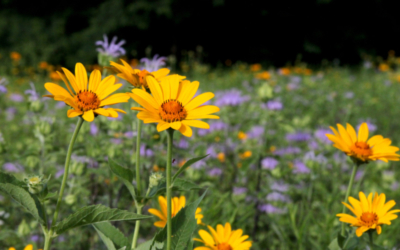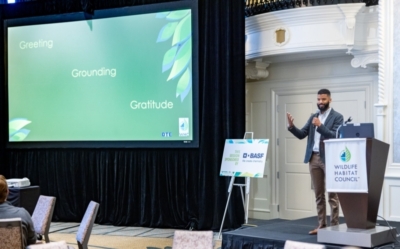5 Creative Ways to Reuse Invasive Species
You may be surprised to learn how many plants and animals you see every day are actually invasive species – non-native organisms that overtake an area and make it uninhabitable for native species. For example, Japanese honeysuckle, English ivy and European starlings are all common invasive species. They may be ubiquitous, but these invasive species, like most, cause both environmental and economic harm.
Why are invasive species so harmful?
Invasive species are detrimental, first and foremost, because they compete with native species for resources. With a lack of natural predators, invasive species can spread quickly, and as they do, they take sunlight, water, food and space away from other species.
Invasion of non-native species also changes the food chain. When invasives proliferate, they may destroy food sources for native species while simultaneously not serving as a food for predators. When native species die out due to lack of food, biodiversity — which is key to a healthy ecosystem — decreases. For example, zebra mussels are an invasive species brought to the Great Lakes from Eurasia in the 1980s. These mussels eat plankton from the water, cutting down on the available food for native fish and thereby decreasing the fish populations.
The economy also suffers when invasive species take over. Invasives can impact property values, agricultural output, tourism opportunities and more. In fact, a recent study estimates that, since 2010, invasive species have cost North America more than $26 billion a year. Controlling invasive species also proves very expensive. Since 1960, managing invasives worldwide has cost at least $95.3 billion, with management strategies costing about $4.2 billion a year in the 2010s.
The importance of removing invasive species
Invasive species can be managed by using pesticides and herbicides, introducing predators, changing human behavior through education, physically removing or destroying invasives and even setting controlled fires.
Removing invasive species is an immense job, which is why having support is so valuable. Hosting community-wide events where volunteers dig up, capture or otherwise get rid of invasive species is a great way to not only solve the problem but also educate community members about the environment.
Once you’ve removed invasive species, what can you do with them?
So you’ve recognized that you have an invasive species growing on your property, and you’ve gotten a group together and worked to remove it — now what? You may be tempted to safely burn or compost the invasive species you’ve removed, but there are plenty of ways that invasive species can be reused to benefit all of us. Here are just a few things you can upcycle invasive species into:
1. Food
Invasive species can be used to feed both animals and people. Several dog food companies have started making blends that include the invasive Asian carp, and zoos can recycle local invasives like acacia trees into feed for their animals. There are also lots of recipes for humans that incorporate invasive plants, from knotweed hummus to autumn olive tarts. One New Hampshire distillery even utilizes green crabs in a whiskey drink! While the thought of eating an invasive species may seem daunting at first, using them as an ingredient creates more incentive for people to harvest and therefore control them.
2. Eco-friendly building materials
Many invasive plants and trees are perfectly suited to construct homes and other buildings. Bamboo, for example, is a highly invasive plant that is incredibly durable. It’s a particularly good choice of building material in locations where earthquakes or hurricanes are prevalent. In fact, WHC member Ramboll has been constructing bamboo houses in Indonesia that are designed to withstand earthquakes better than concrete.
In terms of interior finishes, Japanese knotweed and American signal crayfish shells can be transformed into bio-concrete tiles. This sustainable process, still in development, would reduce the amount of invasive species waste being incinerated. The raw material can be cast into any shape and can vary in appearance and finish to resemble rough stone or even marble.
3. Useful, everyday products
Beyond construction, the properties of various invasive species make them ideal raw materials for products we use regularly. In Ljubljana, the capital of Slovenia, an interdisciplinary group of conservation partners encouraged volunteers to gather dried winter knotweed stems that were then processed into paper products such as notebooks and paper bags. Knotweed isn’t the only invasive plant that can be turned into paper – phragmites and giant salvinia are also great candidates.
Water hyacinth is an invasive aquatic plant that is incredibly absorbent, which led a group of students from Texas State University to develop a compostable menstrual pad made out of water hyacinths. Not only would this process make use of an invasive species, but incorporating an easily accessible material could also help reduce period poverty. Other examples of invasive species being repurposed for everyday uses include an ice melt made from starfish and charcoal produced from invasive trees.
4. Further conservation efforts
The removal of invasive species alone is a positive step towards conservation. But you can go a step further and use invasives to clean up the environment. Water hyacinths are capable of absorbing heavy metals, which means they’re useful for cleaning water. One large-scale example of this is Disney’s Water Hyacinth Project, which utilizes phytoremediation, or the use of plants to clean an environment, to treat wastewater. Once the water hyacinths became too saturated to filter effectively, a process called anaerobic digestion turns them into a gas to be used for fuel.
In order to help prevent erosion along stream and river banks, invasive ivy can be woven into netting. Some invasive plants, like Himalayan blackberry, can be used to make small fences to protect vulnerable habitats and wildlife.
5. Pieces of art
Just like other plants, invasive species can become beautiful works of art. Bittersweet vines can be twisted into wreaths, lamps, sculptures and even furniture. Sculptures made of invasive ivy and placed at the base of a tree not only beautify an outdoor space — they also encourage passersby to avoid compacting the soil around the roots. This kind of public education is another added benefit of using invasive species as art.
It can be easy to only think of invasive species as harmful additions to an ecosystem that are a nuisance to remove. But, with careful management, these plants and wildlife can actually serve very useful functions that are a net gain for the environment.



